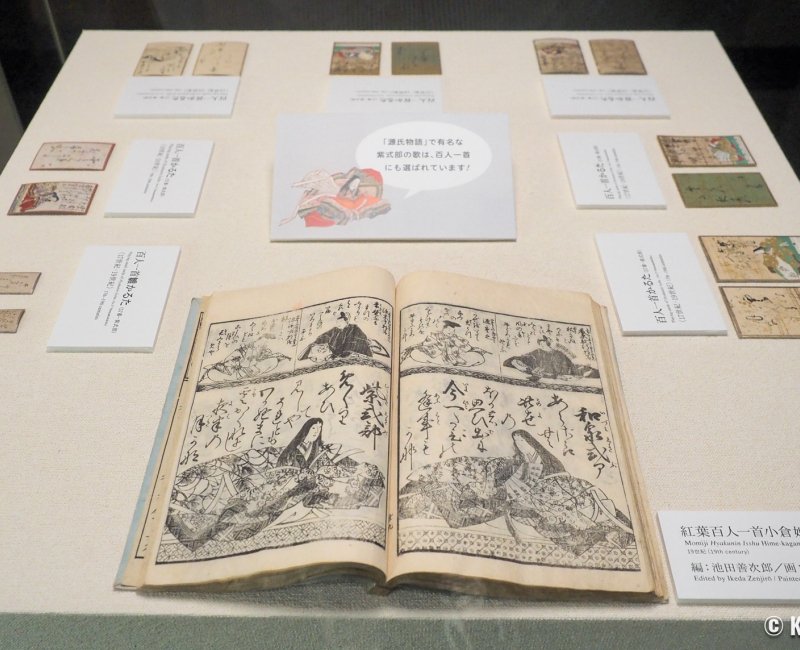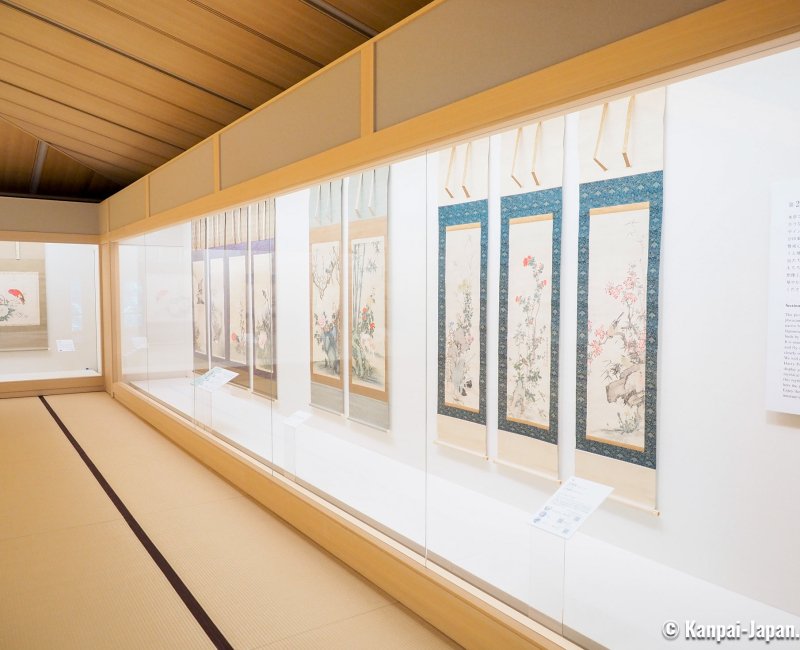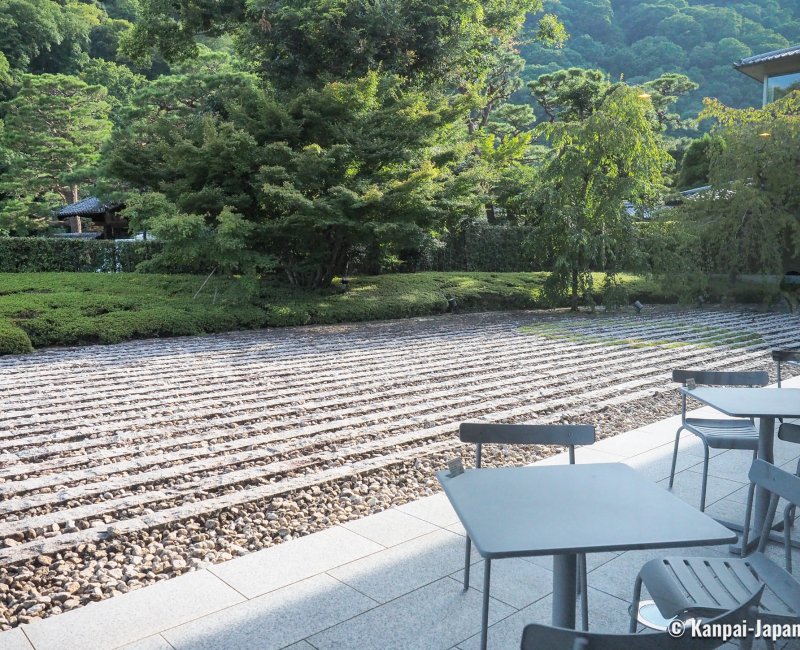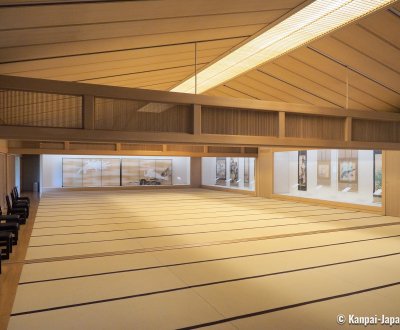Saga Arashiyama Museum of Arts & Culture
The Poetry Museum in the North-West of Kyoto
Saga Arashiyama Museum of Arts & Culture (SAMAC) is an artistic and literary museum located in Arashiyama, in the west of Kyoto. Since 2006, it has been hosting a permanent exhibition dedicated to Hyakunin Isshu, a poetry anthology and a card game. The modern building with roots in traditional architecture is also home to temporary exhibitions of artworks inspired by Japanese poetry.
The Saga Arashiyama Museum of Arts & Culture is an underrated place located on the northern shore of the Katsura (Oi) river in Arashiyama, a few hundred meters away from Togetsukyo Bridge. In 2006, Nintendo's 3rd CEO, Hiroshi Yamauchi, founded the Ogura Hyakunin Isshu-do, Shigureden, a museum dedicated to the Japanese card games, Nintendo’s first trade, and especially to the most popular: Hyakunin Isshu. The museum’s name changed to the current Saga Arashiyama Museum of Arts & Culture in 2018, after renovation works.

Hyakunin Isshu: the 100 poems game
The place selected at the foot of Mount Ogura is said to be where the Hyakunin Isshu ("100 poems by 100 poets") poem anthology was gathered in 1235. It compiles 100 poems written by 100 Japanese poets of the 7th to the 13th century, including emperors and empresses, monks, aristocrats, high-ranking officials and court ladies like Ono no Komachi and Murasaki Shikibu.
The Hyakunin Isshu game started at the imperial court and was first played by the society’s upper classes, but over time, and especially during the Edo period, it democratized to the point of becoming one of the favorite games at family gatherings, like the New Year celebrations. The card deck consists of 2 types of cards: one displays the beginning of a poem and an illustration of its author, and the other one shows the end of the poem. The goal is to pair the beginning and the end of a poem: a random card is drawn from the beginning stack and the players have to find the corresponding card among the 100 spread in front of them.

A modern building with a traditional twist
The SAMAC is sheltered in a construction showcasing modernized codes of traditional Japanese architecture. Thus, the large roof provides shelter both from the rain ☔️ and the scorching sun, while the glass walls at the ground floor let a gentle natural light flow in. At the first floor, the light is filtered by sudare bamboo stores and sunshades. The outer mud walls and the roof-covering works of the museum and its little gate remind of the Edo period sukiya style.
Inside, the exhibition areas are divided between:
- The ground floor (1F), for the permanent collection recounting the history of Hyakunin Isshu with a display of old cards, figurines portraying the poets and paintings on folding screens and kakemono. This space is characterized by its darkness, which helps preserving the artworks. The displayed items are changed regularly.
- The upper floor (2F Tatami Gallery) hosts temporary exhibitions in a large room with a zenithal lighting that, together with the structure’s clear wood, creates a soothing and warm atmosphere. The artworks are displayed along the walls and can be admired when sitting on the tatami floor.
A garden adjoins the museum and extends the terrace of its cafe Omokage Terrace in a contemporary-style rock garden with a pattern of concrete parallel lines, somewhat softened by the lush vegetation of Arashiyama in the background.

Temporary exhibitions are renewed seasonally, about every 3 months, and are sometimes co-organized with the neighboring Fukuda Art Museum. The Tatami Gallery also frequently hosts karuta (Japanese card games) tournaments.
The SAMAC is not a must-see in Arashiyama, a very touristy area with a lot of attractive places to explore. However, it can spark the interest of Nintendo fans for an historical pilgrimage and for amateurs of Japanese arts and literature who would like to enjoy a quieter visit, with English language explanations. On a side note, pictures (without flash) are allowed in most of the museum.

